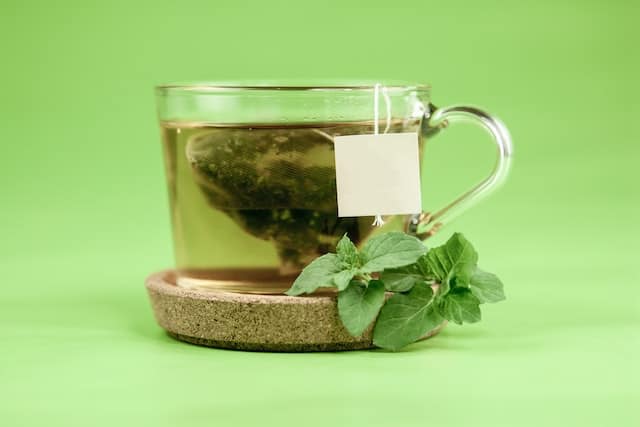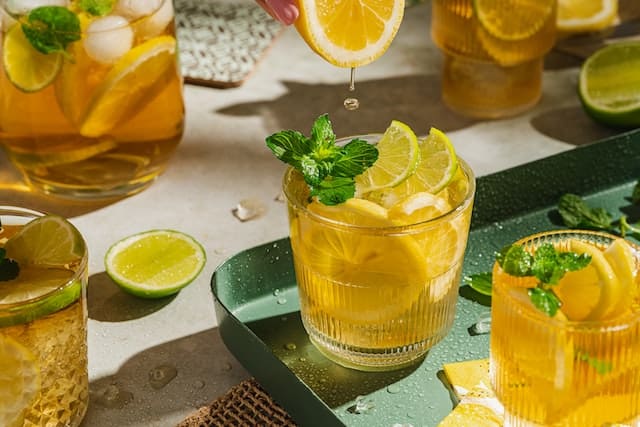The Tea Tattler – From Conventional Tea to Fruit Tea
For generations, afternoon teas have been a way to rest, relax, and catch up with friends and family. Catching up with a friend over a cup of tea continues to be as popular as ever and nowadays there are a huge range of teas (or tea type beverages) to choose from.

Conventional tea
Tea leaves originate from the camellia sinensis plant wherein the top young, juicy leaves, and the bud or tip are the most flavourful. Hand-picked teas are superior to teas harvested using a machine. Conventional teas are identified as per their ‘colours’ – black, red, yellow, white and green. These hues come about due to the production process whereby the darker black and red teas are heavily oxidised when undergoing a chemical reaction with oxygen. Yellow and white teas are mellower and smoother in flavour and whilst the yellow tea is partially oxidised, the white teas are fermented. Green tea is the least processed and has a very distinct grassy flavour.
Superior black tea varieties are those that are ‘whole leaf” and are therefore more flavourful and expensive. Cheaper varieties are those which have been chopped or are ‘tea dust’ in commercially produced tea bags.
Of these conventional teas, black tea is prepared in many ways depending on the region. JIn China, tea is just steeped in hot water, with or without milk and sugar for the English, and in India, the tea leaves are boiled in a mix of water, milk and sugar. The addition of spices like cinnamon and cardamom converts it into the popular ‘masala chai’ (spice tea) which has a robust, warm and earthy flavour. Malaysians and Singaporeans love ‘teh tarik’ (pulled tea) which is ‘pulled’ (poured) repeatedly between two containers to create foam on top. These thicker brews are due to a larger proportion of milk, often condensed.
Herbal tea
Herbal teas are not ‘tea’ in the traditional sense as they are not products of the camellia sinensis plant. These are concoctions of different herbs that are either brewed or steeped in the same way as conventional black and green teas.

Herbs have different healing properties and contain antioxidants. When coupled with dried fruit, flowers, and spices, these are brewed into ‘teas’ to drink. Herbal teas may be simple ones consisting of a single herb, like mint, ginger, basil, or rooibos, but they can also be complex brews containing several herbs and spices. Sometimes, natural sugars (rock sugar or honey) may be added to lend sweetness. In Asia, herbal teas are often used as a part of traditional medicine treatment where varied formulas are put together to cure different ailments. However, at home kitchen level, there are several easy combinations that can be made for the family. Ginger and honey hot brews for an itchy throat, chamomile to soothe and relax, or mint and lemon tea as a digestive aid. Rooibos tea comes from the red bush tree that’s local to South Africa but now popular across the world for its antioxidants and for being caffeine-free.
Flower tea
Floral brews or ‘teas’ are when dried flowers are infused in water and consumed as a beverage. Popular in China, the most common flowers used are chrysanthemums, rose buds, jasmine, and hibiscus. The preparation is a two-step process – first, the flowers are rinsed with lukewarm water to remove any dust particles and then, they are steeped in warm water for a couple of minutes before being served to drink. Avoid very hot water as this will ruin the tender and mellow flavours of the flowers. Flower teas are caffeine-free and a wonderful option when avoiding caffeinated drinks. Flower teas are also great to increase your daily water intake and a low-calorie and sugar-free beverage!
Fruit tea
These are brews traditionally made with dried fruits although nowadays fresh fruit may be used as well. Dried peaches, pineapple, apples, and berries can be brewed into a warm beverage during cold and rainy months or made into a cooling refreshing drink during hot weather. There may be some additives (like sugar) added to the dried fruit when bought from supermarkets. However, organic stores are likely to sell the most naturally dried fruit that have enough natural sugars.

Are all teas caffeinated?
‘Caf’ and ‘decaf’ are terms that were commonly applied to coffee but are now used for tea as well. It sometimes is referred to as theine simply because it is part of tea and not cofee. The ‘leaf’ teas that are harvested from the camellia sinensis tea bushes contain caffeine which is a stimulant. The amount of caffeine varies depending on the production process as the levels increase through the oxidation process. While herbal, fruit and flower teas are caffeine-free, restaurants, chai bars or bubble tea shops may add conventional tea leaves to the mix.
So, which tea are you going to drink today? There are many options to choose from depending upon your mood, the weather, time of the day and the flavour you seek!